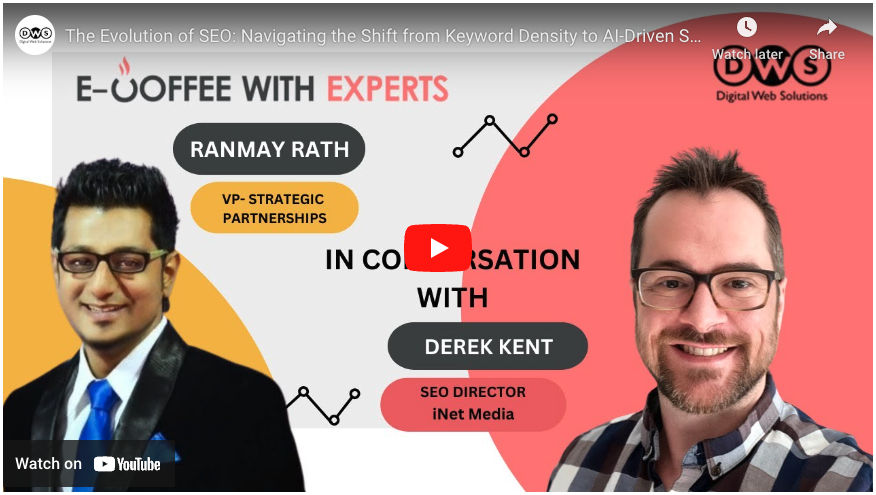
Not all content is copy, but all copy is content – be wary of any content writer or digital marketing company that doesn’t know this! There are important distinctions between copy and content writing and they’re critical to the success of your business. Both styles of writing serve a purpose — that if left unfulfilled — will cause your company to nosedive.
Not knowing the difference between the two styles of writing can lead to costly errors, which can be avoided with the right knowledge. Here are some of the biggest mistakes businesses make with their copy and content, and what to do instead.
The difference between copy vs content
First, let’s dive into what copy and content are. While many people have the inclination to use these terms interchangeably, there is a stark difference between the two writing styles that must be understood — especially in the digital age of the 21st century.
Copywriting
Simply put – the purpose of copywriting is to encourage your audience to take action, which is why there’s typically a Call-To-Action (CTA) at the end of a strategically placed section of copy. It can be to opt-in to a newsletter, open up an email, or open up their wallets.
Examples of copywriting include:
- Websites
- Email marketing
- Newsletters
- Landing pages
- Sales pages
- Billboards
- Ads, traditional and digital
- Promotional material
- Social media
- YouTube pre-roll ad scripts
The elements of good copywriting:
Good copy persuades and influences your reader to take a specific action, driving sales and leads. Copywriting generates profitability; it communicates your Unique Selling Proposition (USP), piques the interests of your target audience, and persuades them to act.
Great copywriters use:
- Emotion to pull the audience in
- Sales tactics, like overcoming objections and quelling fears
- The art of persuasion
- The top purchasing motivators (ie: time, money, relationships, health)
- Consumer psychology to tap into why people buy
Content Writing
Did you know that over 80% of businesses think of their blogs as “critical” to their company? And that companies that blog even occasionally (once or twice a month) have more than 65% of sales opportunities than companies that don’t.
As the now cliched expression goes: Content is King.
While copywriting may be structured and sequential, content writing is more fluid and free-flowing. It is used to engage, educate, or entertain your audience, as well as build brand authority and establish trust and credibility.
Content writing allows you to demonstrate your knowledge and expertise. And this in turn builds your know/like/trust factor to potential customers. Examples of content writing include:
- Blogs
- Infographics
- Emails
- White papers
- Case studies
- How to’s
- User guides
The main element that separates copy from content writing is the end goal that each writing style works to achieve.
Despite the distinct qualities and aims of each writing style, there still tends to be a lot of confusion between copy and content writing. And depending on who you ask, you will get different answers as to what each one entails.
Here’s where some of the 3 biggest mistakes can happen…
1) Only using copy
Today’s consumers don’t want to be sold to, they want to know who they’re buying from before they make a decision.
Think of it as meeting someone for the first time and the first thing they do is ask you for $100, even before the introduction and knowing their name. You would probably feel uncomfortable, annoyed, and a little disgusted. Producing valuable, informative content can supplement your copy and meet your customer when they’re ready to buy.
2) Only using content
At the end of the day, businesses need sales. As much as we can build the know/like/trust factor through amazing content, customers also need to be persuaded.
Struggling with sales? Difficulty maximizing your Return on Investment (ROI)? Can’t get subscribers to open your emails? The answer to your business woes can be found in the skills of a good copywriter.
Here’s a simple example of how content and copy can work as an ecosystem to capture the attention of your audience and lead to a sale:
- A potential customer finds your blog after searching for a solution to their problem (ie: ‘How to bake a cake’).
- They like your blog post and browse through your website. They want to know more about you.
- There is a CTA at the bottom of the About Us page, encouraging the customer to sign up for your email newsletter.
- The reader signs up, and they’re now in your sales funnel as a warm lead.
- As part of your email campaign, you offer them a discount if they buy today.
- They make a purchase and become a loyal, satisfied customer.
3) Hard selling on blogs
Going back to that person you’re meeting for the first time who asked you for $100 before introducing themselves… let’s say they never asked you for money. Let’s say they actually did introduce themselves and they strike up an engaging conversation with you.
You’re learning a lot, you’re entertained, you’re enjoying yourself – and then they say, “Hey, listen. I gotta go, but can I have $100 before I leave?” Yikes. Good repertoire down the drain.
One of the biggest mistakes that businesses make is using their blogs to sell. While there’s a time and place for this (for example: to support a launch or to announce a deal), blogs should primarily be used for the purpose of providing valuable content.
In fact, Google has cracked down on this. Blogs that have a ‘salesy’ call-to-action (ie: “Buy our new baking pans today!”) are flagged and rank lower. Instead, keep your blogs informative and educational with good content that inspires the reader to want to learn more about your company. It’s leading the horse to the water, instead of forcing them to drink.
To sum it all up…
Copy is meant to sell. Content is meant to educate, inform, and entertain. And businesses need both to succeed in today’s competitive climate. If you have questions, reach out to our team and iNet will review your content strategy.





